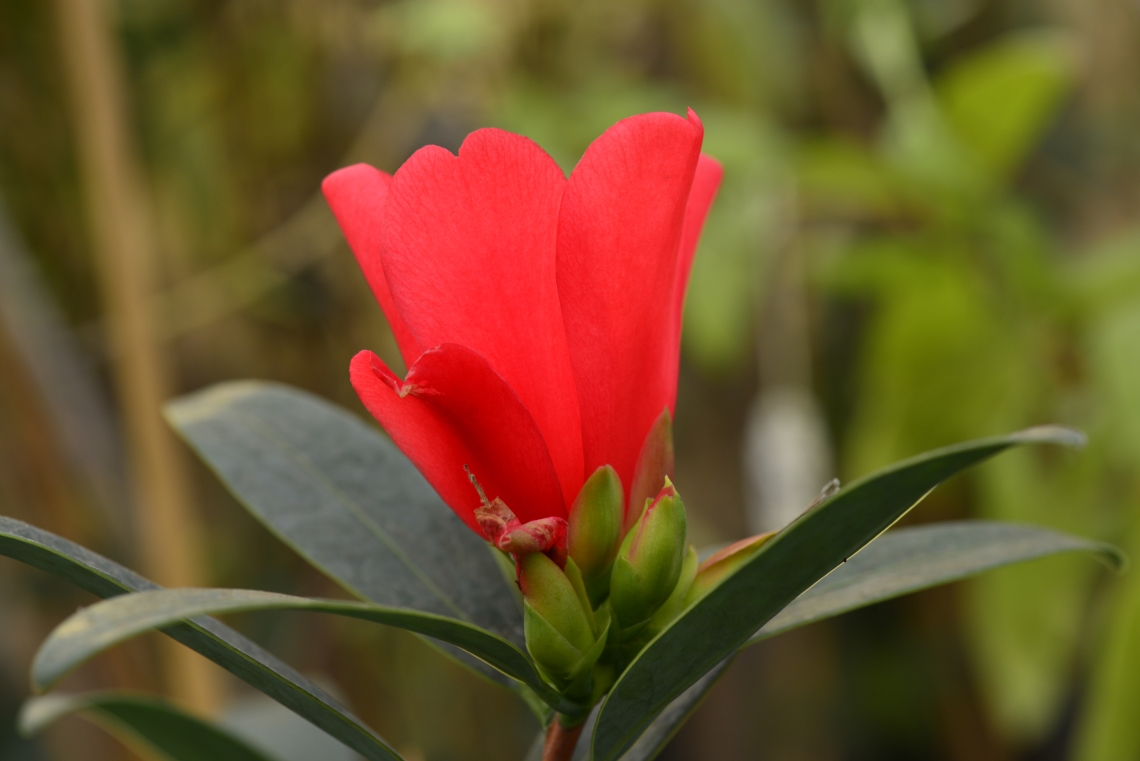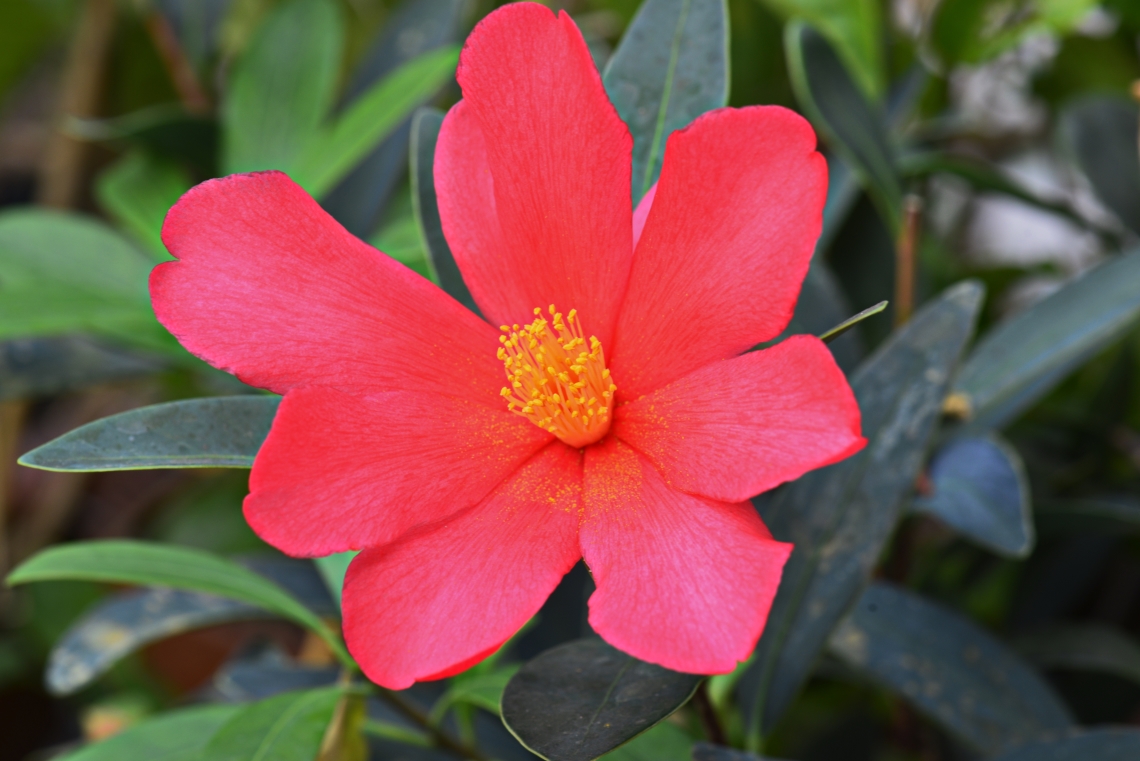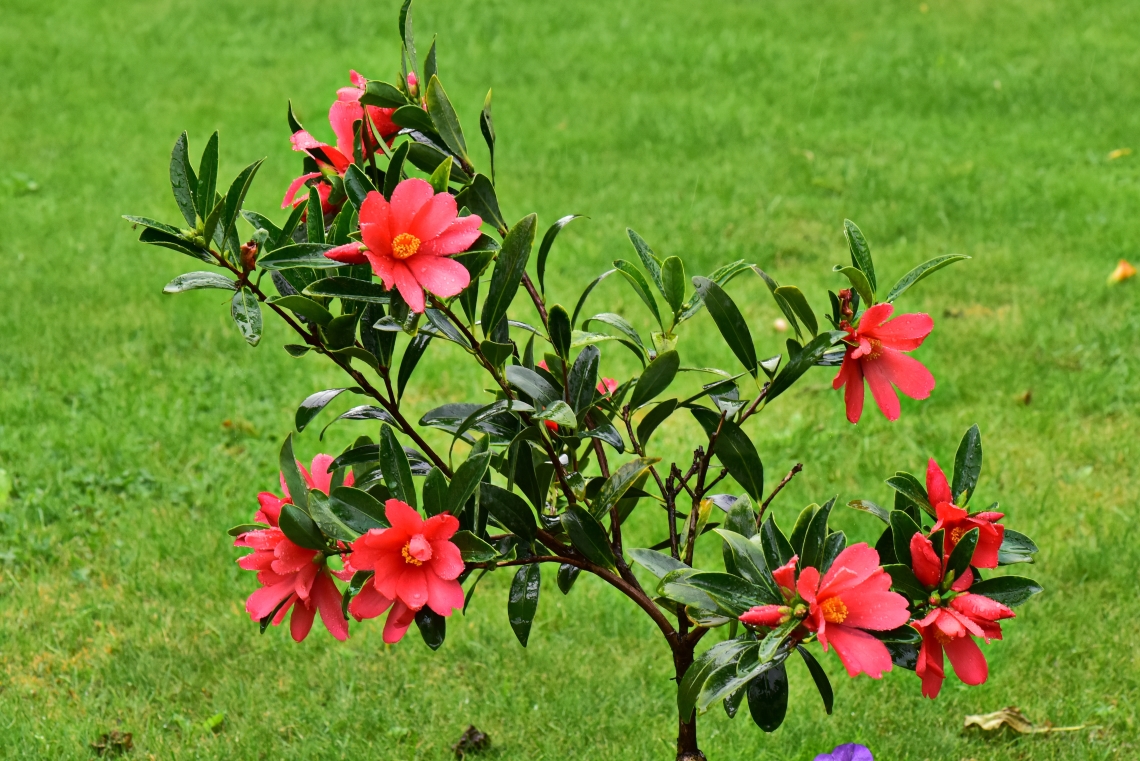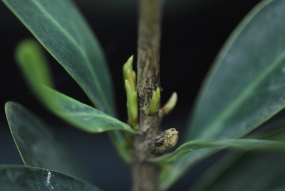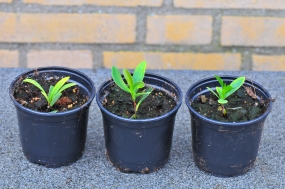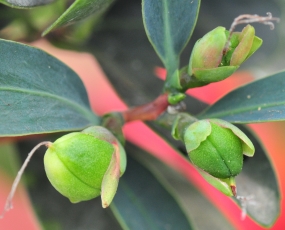Introduction
This rare camellia was discovered in 1984, in China. Up until the year 2000, this type of camellia has mainly been recognized as herbarium material and grouped under the name of Camellia azalea. At the time of discovery, people were allowed to take various cuttings and collect seeds from the plants. Consequently they have started to propagate them. One reason for doing this is because this plant has become an endangered species. The flowers are very attractive and therefore subject to being cut back and reduced in number within their natural habitat. Because there are only about a thousand plants left, their exact location is kept secret. This camellia, along with other rare plants, has come into my possession.
Distribution
This species is native to the southwest province of Guangdong in China.
Description
This species grows to a height of approximately 1-2.5 m and does not belong to the larger species. The foliage is striking; it has glossy, elongated dark green leaves 3-4 cm wide and 7-9 cm long. This plant is remarkable by the fact that it will bloom for many months during the SUMMER!
Flowers are borne at the tips of the stems from up to 7 buds. The size of the flower is 10-12 cm and is notably large for a camellia. I had not anticipated this size after seeing the smaller flowers of a plant brought from China, which was on display during the Horticultural Fair in Amsterdam. The tepals are 2.5-3 cm wide and 7-8 cm long and the colour is red in accordance with the RHS standard 50A.
Care
I obtained a grafting but there was hardly any stem on it. The grafting had a division of approx. 4 cm on which a stem had been attached.
This grafting was potted up in good soil with soil taken from the wood. The soil was kept moderately wet and initially the plant was given fertilizer at the ratio of 10:52:10 (N: P: K), then later in more equal proportions of 20:20:20. The plant thrived very well in these conditions and developed 10 new stems.
Propagation
I immediately took cuttings of the new stems and after 2 months they were rooted. The plant is easily propagated from cuttings but the cuttings are very slow growing and they are very sensitive to conditions. The optimum conditions for growing cuttings from this plant have yet to be discovered. Grafting succeeds but the results as of yet are not very good. On the other hand, the plant produces ripe seed rather quickly. A month after pollinating by hand I saw the first seed head clearly visible.
Conclusion
I hope that for the future of this plant, propagation methods will improve so that the plant can be mass-produced rapidly. At present there is no Camellia that produces flowers in the summer like this one and the plant itself boasts large flowers for months at a time.

